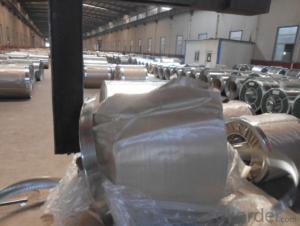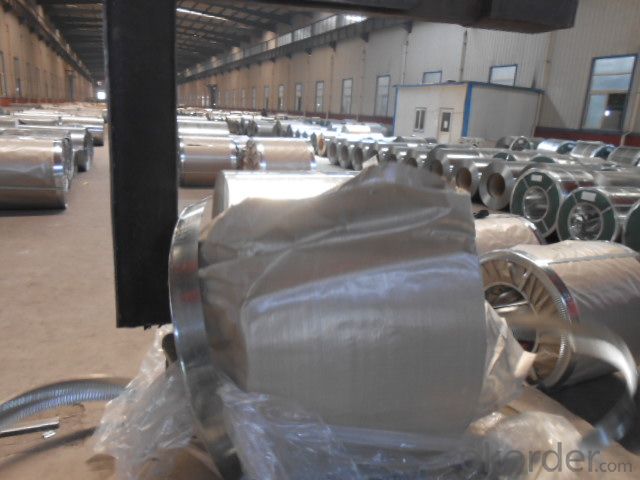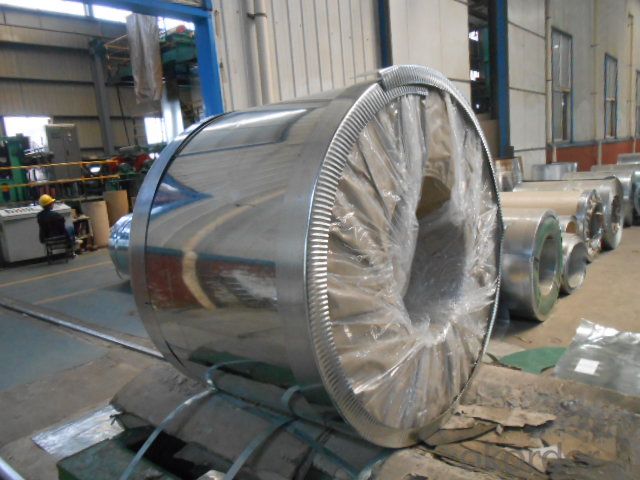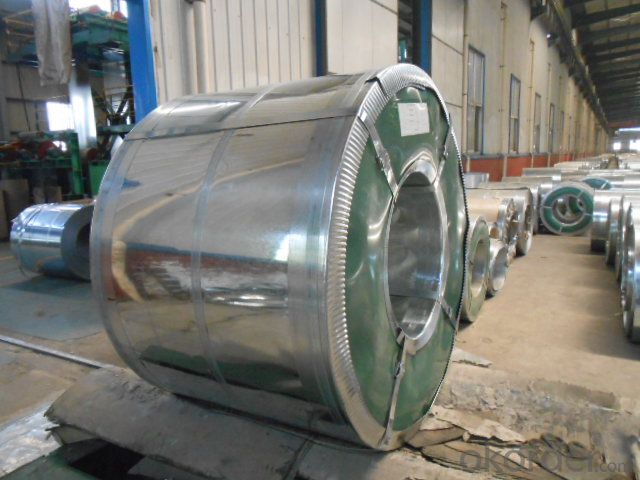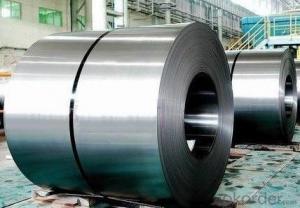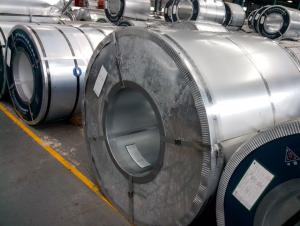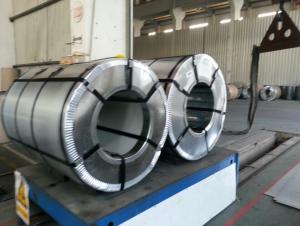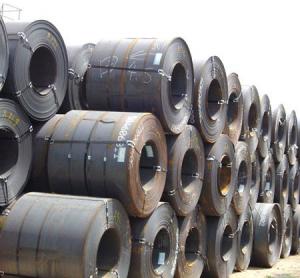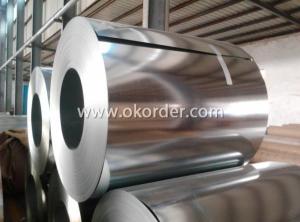HOT DIPPED GALVANIZED STEEL COIL
- Loading Port:
- China Main Port
- Payment Terms:
- TT OR LC
- Min Order Qty:
- -
- Supply Capability:
- 10000 m.t./month
OKorder Service Pledge
Quality Product, Order Online Tracking, Timely Delivery
OKorder Financial Service
Credit Rating, Credit Services, Credit Purchasing
You Might Also Like
HOT-DIP GALVANIZED STEEL COIL
SIZE:0.2mm*762mm*C
ZINC COATING:60g/m2
STANDARD:JIS G 3302
SURFACE:CHROMATED,REGULAR SPANGLE, UNOILED
STEEL GRADE:SGCH HARD QUALITY(75-95 HRB)
COIL WEIGHT:3-6 ton
COIL ID:508mm
TOLERANCE: THICKNESS:-0.02mm; WIDTH:0/5mm.ZINC COATING:60g/m2 TOLERANCE:+/-10% WITH QUANTITIES AND AMOUNT.
PACKAGE:FULL PACKED WITH ANTI-DAMP PAPER,IRON SHEET OUTSIDE;
- Q: Can steel coils be used in the manufacturing of appliances?
- Yes, steel coils can be used in the manufacturing of appliances. Steel coils are commonly used in the production of various appliances such as refrigerators, washing machines, and stoves. The steel coils provide durability, strength, and corrosion resistance, making them an ideal material for appliance manufacturing.
- Q: Steel used to be made in the #92;Bessemer Converter, write about how steel making processes today produce better quality steel????
- how we can prepared steel by using converter? ans it
- Q: What are the different surface treatments applied to steel coils?
- Some of the different surface treatments applied to steel coils include galvanizing, which involves coating the steel with a layer of zinc to protect it from corrosion, painting or powder coating to enhance the aesthetics and provide additional protection, and passivation to remove any impurities on the surface and improve its corrosion resistance.
- Q: If you combine stainless steel with gold, does that make stainless gold?
- Stainless steel, I believe, was an actual trade name of a british cutlery company's knives, once the ability to create iron-chromium alloys was mastered. Stainless steel's main alloying agent that prevents it from rusting, is Chromium. The Chromium in the steel creates an protective layer (not unlike rust), which acts as a protectant for the rust-prone iron...keeping real rust away. I am no metallurgist, but I have not heard of gold being used as an alloying agent in common steels. I'm not even sure they would mix. Not all metals can be stirred together successfully. Even if gold could be used as an alloying agent for steel, it would need to be in such a small percentage, you would not end up with a metal that was gold in appearance...so it would still look like steel of some sort. The funny part is, gold is already stainless, and does not tarnish or rust as it is.
- Q: How do steel coils contribute to the manufacturing of household appliances?
- Steel coils contribute to the manufacturing of household appliances by providing a durable and versatile material for various components. These coils are used to create the outer casings, frames, and structural parts of appliances like refrigerators, washing machines, and dishwashers. The strength and flexibility of steel coils ensure the longevity and stability of these appliances, while also enabling manufacturers to create sleek and attractive designs.
- Q: What is the role of steel coils in the production of pipes and tubes?
- Steel coils are essential in the production of pipes and tubes as they serve as the primary raw material. These coils are unwound and fed into a pipe or tube mill where they are shaped, welded, and formed into the desired dimensions. The high strength and durability of steel make it an ideal choice for manufacturing pipes and tubes, ensuring their structural integrity and ability to withstand various applications and environments.
- Q: What are the different methods of storing steel coils?
- There are various ways to store steel coils depending on the specific requirements and limitations of the storage facility. Some commonly used methods include: 1. Stacking: Steel coils are stacked on top of one another in a stable manner, maximizing vertical space. However, careful stacking is necessary to maintain stability and prevent damage. 2. Block stacking: Steel coils are arranged in blocks, with each coil placed directly on top of another. The blocks are then stacked to optimize space. This method provides stability and easy access to individual coils, but additional equipment may be needed to prevent damage. 3. Coil cradles: These are specialized racks or frames designed to hold steel coils horizontally. They offer support and prevent rolling or shifting, making them suitable for smaller coils or when quick access is required. 4. Coil saddles: U-shaped frames specifically designed to hold and support steel coils vertically. They are often used in conjunction with block stacking or stack storage methods, providing stability and preventing rolling or collapsing. 5. Coil racks: Steel structures designed to hold multiple coils in an organized manner. They can have multiple levels or tiers, maximizing space efficiency. Coil racks are typically used for larger coils and can be customized for specific dimensions. 6. Automated storage systems: In large-scale facilities, mechanical systems such as coil cranes or coil carousels are used to transport and store steel coils. These systems ensure efficient and fast retrieval in high-volume operations where frequent coil handling is necessary. When determining the most suitable storage method for steel coils, factors such as size, weight, accessibility, and environmental conditions should be considered. Proper handling, labeling, and regular inspections are also crucial for maintaining the integrity and longevity of the stored coils.
- Q: How are steel coils used in the production of steel washers?
- Steel coils are used in the production of steel washers as they are unwound, flattened, and cut into smaller pieces to create the raw material for manufacturing washers.
- Q: How are steel coils used in the manufacturing of seat structures?
- Steel coils are commonly used in the manufacturing of seat structures as they provide strength and durability. These coils are typically shaped and molded into springs that are then integrated into the seat cushions and frames. The steel coils help to provide support and enhance the overall comfort of the seats by ensuring proper weight distribution and minimizing sagging over time.
- Q: How are steel coils used in the production of steel hinges?
- Steel coils are used in the production of steel hinges by being uncoiled and then cut into specific lengths and widths. These coils serve as the raw material for the hinges, providing the necessary strength and durability.
Send your message to us
HOT DIPPED GALVANIZED STEEL COIL
- Loading Port:
- China Main Port
- Payment Terms:
- TT OR LC
- Min Order Qty:
- -
- Supply Capability:
- 10000 m.t./month
OKorder Service Pledge
Quality Product, Order Online Tracking, Timely Delivery
OKorder Financial Service
Credit Rating, Credit Services, Credit Purchasing
Similar products
Hot products
Hot Searches
Related keywords
